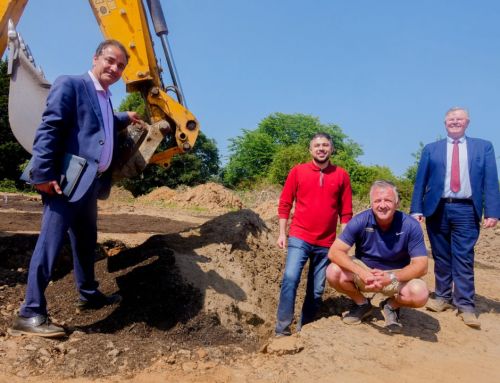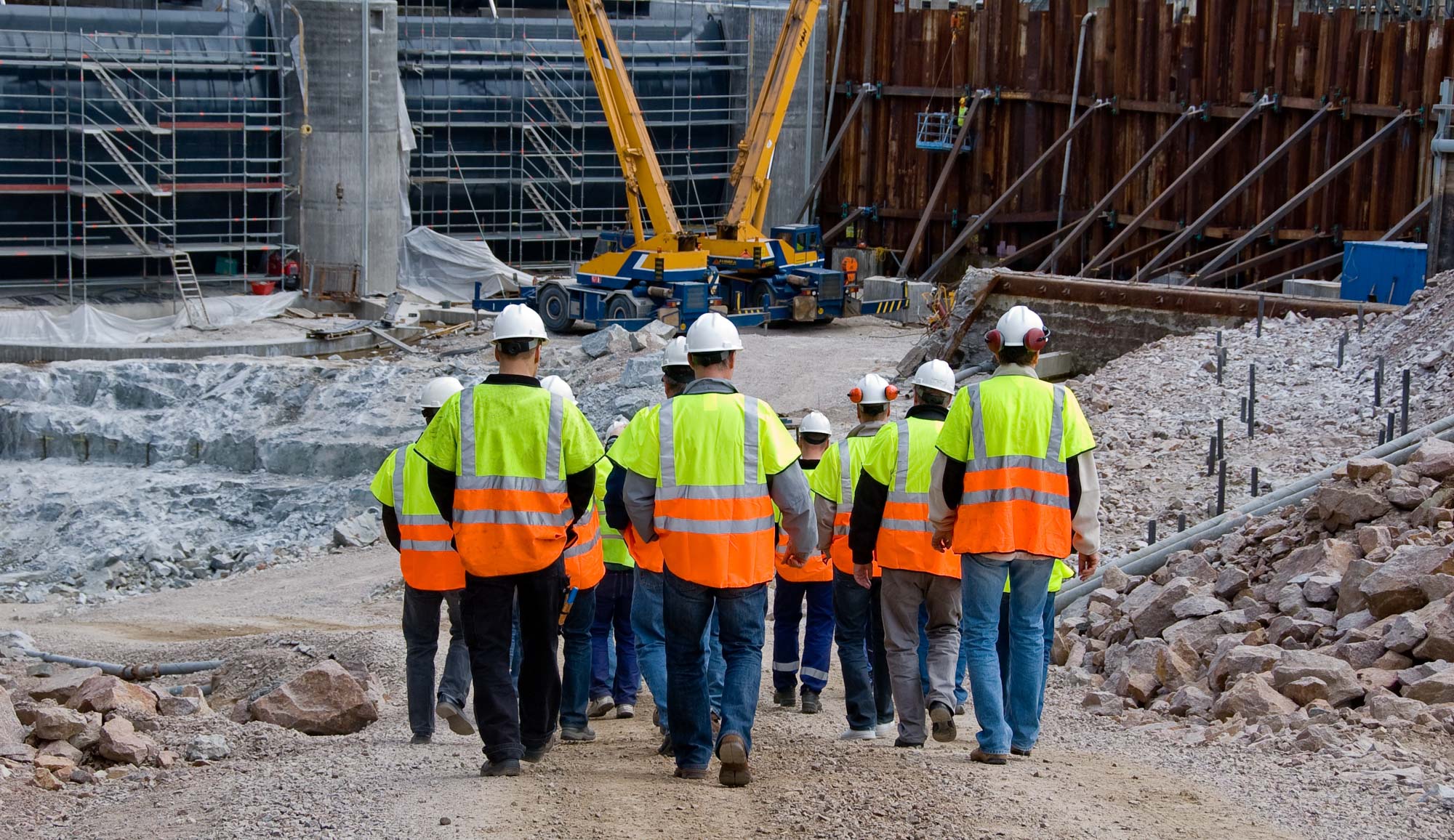S MEs are the backbone of construction, but it can be tough competing with the big beasts. Neil Gerrard looks at the challenges and the success stories.
There are hundreds of thousands of construction companies in Great Britain – 342,456 to be exact. Of those, by far and away the largest proportion are companies with fewer than 250 employees – the common definition of an SME.
But life as an SME can be a challenge, particularly in construction, where long supply chains and complex contractual arrangements can leave a lot of power sitting with the big beasts, often at the expense of their smaller counterparts.
So what are the challenges facing construction SMEs, and what can they do to overcome them and thrive in a notoriously competitive sector?
‘Not natural entrepreneurs’
“I’m not being unkind when I say this, but I think a lot of business owners in construction are not natural entrepreneurs,” says Maria Coulter, who runs SME consultancy Construction Coach.
“They might start a business because they are good at a skill. But nobody really teaches you how to build a business. We should be looking at this from an education perspective.”
Coulter worries about construction SMEs making a decent profit margin.
“Do margins have to be so low? If you are not making the level of profit that you need, how are you going to grow your business, invest in new technology and innovation?”
Other challenges Coulter recognises are juggling different responsibilities in small organisations – such as getting to grips with technology, not knowing where to get help and support and having ‘limiting beliefs’ – that hold business owners back from achieving. She adds:
“There is fear about the competition and the fact that we are seen as a commodity industry. It is hard to differentiate yourself. People in small businesses have got it fixed in their head that it should be about the lowest price. But they aren’t presenting clients with anything else to make a decision on. There is a lot of work needed to understand what value really means and why clients should pay more for it.”
Practical challenges
According to Dr Nicola Thompson, group compliance and performance director at consultancy Pick Everard, there are five key practical challenges that SMEs face: staff retention, cash flow, late payment, rising costs and difficult jobs. She says:
“For SMEs, budgets often do not allow for extensive training programmes for staff and it is difficult to promise hardworking professionals that they will be working on multi-million-pound contracts. With skills shortages worsening and average wages increasing, SMEs will struggle to keep hold of staff.”
Construction firms: Value of work done by size of firm and type of work in 2020, Great Britain
She adds:
“There is fear about the competition and the fact that we are seen as a commodity industry. It is hard to differentiate yourself. People in small businesses have got it fixed in their head that it should be about the lowest price. But they aren’t presenting clients with anything else to make a decision on. There is a lot of work needed to understand what value really means and why clients should pay more for it.”
Practical challenges
According to Dr Nicola Thompson, group compliance and performance director at consultancy Pick Everard, there are five key practical challenges that SMEs face: staff retention, cash flow, late payment, rising costs and difficult jobs. She says:
“For SMEs, budgets often do not allow for extensive training programmes for staff and it is difficult to promise hardworking professionals that they will be working on multi-million-pound contracts. With skills shortages worsening and average wages increasing, SMEs will struggle to keep hold of staff.”
Construction firms: Value of work done by size of firm and type of work in 2020, Great Britain
Dan Maher, managing director of Arc Partnership, a joint venture between procurement body Scape and Nottinghamshire County Council that works particularly closely with SMEs, also sees challenges in labour, supply chain resilience and inflation.
“These issues are often only discussed in the context of principal contractors,” says Maher. “For SMEs, they represent significant downward pressure in terms of pricing as well as retaining labour.”
Seeking support
Maher wants to see the wider industry working as one to engage clients and share the financial burden presented by current market conditions. He says:
“Ultimately, if SMEs fail, principal contractors and their clients fail. An effective socially conscious response involves principal contractors managing their SME supply chains fairly.”
Five tips for SMEs
- Be more proactive when it comes to seeking out the support you need. Don’t to be afraid to ask for help.
- Tap into Local Enterprise Partnerships, and their local growth hubs in particular (lepnetwork.net/local-growth-hub-contacts).
- Join trade associations and membership organisations, as well as connecting with local universities.
- Take advantage of free resources like Futurelearn (futurelearn.com) which is a platform for mass open online courses (MOOCs).
- Promote and prioritise closer working relationships between SMEs, principal contractors and clients. Maintain open and constant dialogue with the rest of your supply chain.
Source: Premier Construction Management by Neil Gerrard
https://constructionmanagement.co.uk/can-you-survive-and-thrive-as-a-construction-sme
S MEs are the backbone of construction, but it can be tough competing with the big beasts. Neil Gerrard looks at the challenges and the success stories.
There are hundreds of thousands of construction companies in Great Britain – 342,456 to be exact. Of those, by far and away the largest proportion are companies with fewer than 250 employees – the common definition of an SME.
But life as an SME can be a challenge, particularly in construction, where long supply chains and complex contractual arrangements can leave a lot of power sitting with the big beasts, often at the expense of their smaller counterparts.
So what are the challenges facing construction SMEs, and what can they do to overcome them and thrive in a notoriously competitive sector?
‘Not natural entrepreneurs’
“I’m not being unkind when I say this, but I think a lot of business owners in construction are not natural entrepreneurs,” says Maria Coulter, who runs SME consultancy Construction Coach.
“They might start a business because they are good at a skill. But nobody really teaches you how to build a business. We should be looking at this from an education perspective.”
Coulter worries about construction SMEs making a decent profit margin.
“Do margins have to be so low? If you are not making the level of profit that you need, how are you going to grow your business, invest in new technology and innovation?”
Other challenges Coulter recognises are juggling different responsibilities in small organisations – such as getting to grips with technology, not knowing where to get help and support and having ‘limiting beliefs’ – that hold business owners back from achieving. She adds:
“There is fear about the competition and the fact that we are seen as a commodity industry. It is hard to differentiate yourself. People in small businesses have got it fixed in their head that it should be about the lowest price. But they aren’t presenting clients with anything else to make a decision on. There is a lot of work needed to understand what value really means and why clients should pay more for it.”
Practical challenges
According to Dr Nicola Thompson, group compliance and performance director at consultancy Pick Everard, there are five key practical challenges that SMEs face: staff retention, cash flow, late payment, rising costs and difficult jobs. She says:
“For SMEs, budgets often do not allow for extensive training programmes for staff and it is difficult to promise hardworking professionals that they will be working on multi-million-pound contracts. With skills shortages worsening and average wages increasing, SMEs will struggle to keep hold of staff.”
Construction firms: Value of work done by size of firm and type of work in 2020, Great Britain
She adds:
“There is fear about the competition and the fact that we are seen as a commodity industry. It is hard to differentiate yourself. People in small businesses have got it fixed in their head that it should be about the lowest price. But they aren’t presenting clients with anything else to make a decision on. There is a lot of work needed to understand what value really means and why clients should pay more for it.”
Practical challenges
According to Dr Nicola Thompson, group compliance and performance director at consultancy Pick Everard, there are five key practical challenges that SMEs face: staff retention, cash flow, late payment, rising costs and difficult jobs. She says:
“For SMEs, budgets often do not allow for extensive training programmes for staff and it is difficult to promise hardworking professionals that they will be working on multi-million-pound contracts. With skills shortages worsening and average wages increasing, SMEs will struggle to keep hold of staff.”
Construction firms: Value of work done by size of firm and type of work in 2020, Great Britain
Dan Maher, managing director of Arc Partnership, a joint venture between procurement body Scape and Nottinghamshire County Council that works particularly closely with SMEs, also sees challenges in labour, supply chain resilience and inflation.
“These issues are often only discussed in the context of principal contractors,” says Maher. “For SMEs, they represent significant downward pressure in terms of pricing as well as retaining labour.”
Seeking support
Maher wants to see the wider industry working as one to engage clients and share the financial burden presented by current market conditions. He says:
“Ultimately, if SMEs fail, principal contractors and their clients fail. An effective socially conscious response involves principal contractors managing their SME supply chains fairly.”
Five tips for SMEs
- Be more proactive when it comes to seeking out the support you need. Don’t to be afraid to ask for help.
- Tap into Local Enterprise Partnerships, and their local growth hubs in particular (lepnetwork.net/local-growth-hub-contacts).
- Join trade associations and membership organisations, as well as connecting with local universities.
- Take advantage of free resources like Futurelearn (futurelearn.com) which is a platform for mass open online courses (MOOCs).
- Promote and prioritise closer working relationships between SMEs, principal contractors and clients. Maintain open and constant dialogue with the rest of your supply chain.
Source: Premier Construction Management by Neil Gerrard
https://constructionmanagement.co.uk/can-you-survive-and-thrive-as-a-construction-sme











